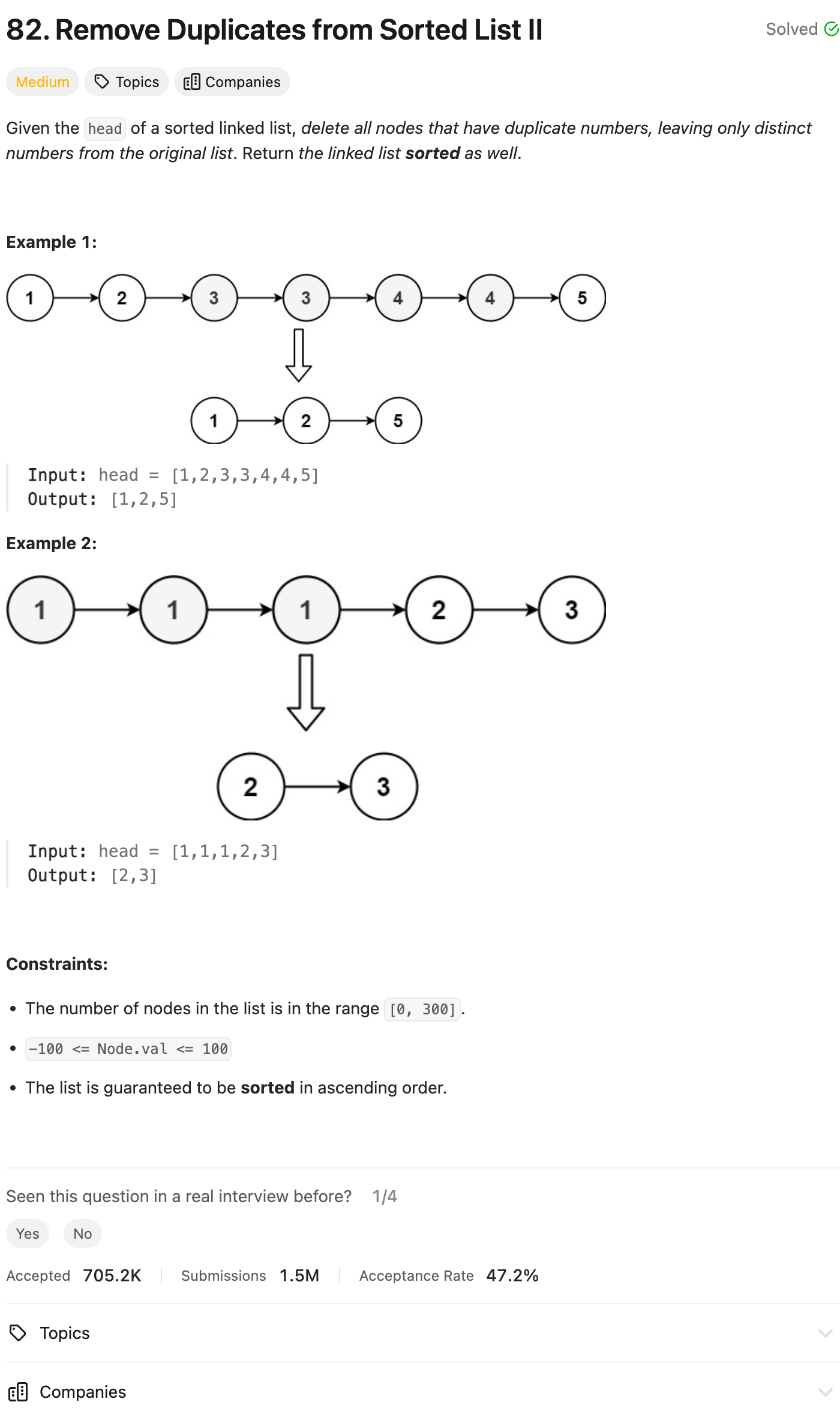Problem of The Day: Remove Duplicates from Sorted List II
Problem Statement
My notes:








O(n) Space Approach
Intuition
My initial thought is to iterate through the list, keeping track of the frequency of each node’s value. This frequency information can then be used to identify and delete duplicate nodes.
Approach
- Initialize a dummy node to simplify handling edge cases.
- Iterate through the list and count the frequency of each node’s value using a defaultdict.
- Iterate through the list again. If a node’s value has a frequency greater than 1, skip it and update the pointers to remove it from the list.
- Return the modified list.
Complexity
-
Time complexity: O(n), where n is the number of nodes in the linked list. We process each node twice, once for counting frequencies and once for removing duplicates.
-
Space complexity: O(n), as we use a defaultdict to store the frequency of each node’s value.
Code
# Definition for singly-linked list.
# class ListNode:
# def __init__(self, val=0, next=None):
# self.val = val
# self.next = next
class Solution:
def deleteDuplicates(self, head: Optional[ListNode]) -> Optional[ListNode]:
dummy = ListNode(-101, head)
prev = dummy
freq = defaultdict(int)
curr = head
while curr:
freq[curr.val] += 1
curr = curr.next
curr = head
while curr:
if freq[curr.val] > 1:
curr = curr.next
prev.next = None
else:
prev.next = curr
prev = curr
curr = curr.next
return dummy.next
Editorial Solution
Approach 1: Sentinel Head + Predecessor
O(1) space approach
class Solution:
def deleteDuplicates(self, head: ListNode) -> ListNode:
# sentinel
sentinel = ListNode(0, head)
# predecessor = the last node
# before the sublist of duplicates
pred = sentinel
while head:
# If it's the beginning of a duplicates sublist
# skip all duplicates
if head.next and head.val == head.next.val:
# move till the end of duplicates sublist
while head.next and head.val == head.next.val:
head = head.next
# Skip all duplicates
pred.next = head.next
# Otherwise, move predecessor
else:
pred = pred.next
# move forward
head = head.next
return sentinel.next
- Time complexity: O(n)
- Space complexity: O(1)
